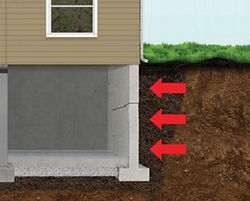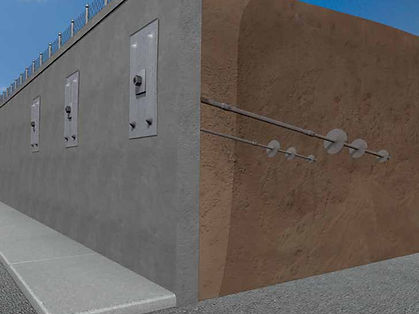Soil Screw Retention Wall Anchors
Chance Soil Screw wall anchors reinforce in-situ soil with screws installed in a grid pattern. The rows of soil screws are typically installed at horizontal angles. Soil Screw wall anchor size and grid spacing are determined by soil conditions and load requirements, including the intended overburden. The system further removed performance uncertainties and the associated costs of grouted soil nails in soils with low shear strength. Soil Screw wall anchors in soil act as bearing devices as opposed to grouted anchors which rely on friction between the soil and grout.




Installation
Soil Screw anchors install similarly for both tieback and soil nail walls. The anchor is rotated into the soil with a continuous pressure and smooth rotation of the helices while monitoring the torque and depth of penetration.
Soil Screw anchors can be installed using simple, less expensive, equipment. Reduced equipment requirements for installation allow more flexibility, even in areas with overhead obstructions. Lastly, with no grouting necessary in the installation, Soil Screw anchors provide required capacity immediately upon installation.
Tieback Anchors
Chance Helical Tiebacks Anchors are used to construct permanent and temporary sheet pile walls, bulkheads for marine applications, concrete reinforced walls, precast concrete panel walls and even multi-tier tieback walls. Helical anchors transfer load to soil by end bearing; the anchoring resistance is mobilized through pressure against the helical plates.
A tieback wall system with Chance products provides predictable results with a proven engineered solution that can be designed to site specific conditions and loads.




Application Versatility
Avoid common construction issues such as spoils removal, de-watering, grout cure time while taking advantage of the fact that helical anchors can be loaded immediately after installation.